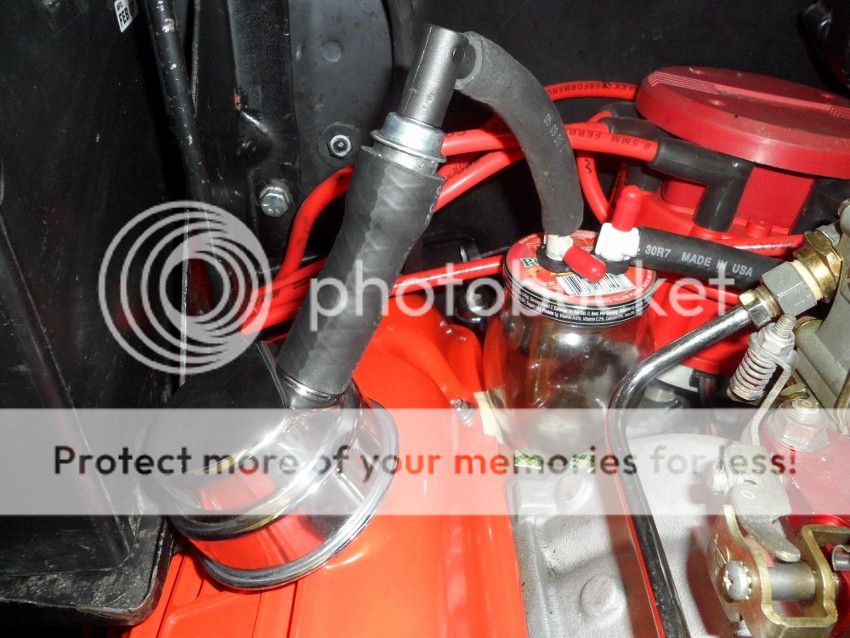Robert
Banned
Bought a fresh can of carb cleaner and started spraying individual hoses around top of engine, not idle increase - - till I sprayed in between the 2 four barrels, then I got definite idle increase.
Also, rubber bushing where PCV valve mounts into valve cover a bit loose, got to source one.
Auto parts manager told me to take PCV and soak it inside a small glass bottle with carb cleaner overnight, then spray out again. He said rarely PCV's need replacement, mostly cleaning if caught early enough.
Guess I'll replace all the little plastic caps over brass carb vacuum tubes first inside, see if that works.
Otherwise, gonna have to remove both carbs to inspect manifold, carb bases, and replace both carb gaskets (after checking all mating surfaces with straight edge).
If plastic cap replacement does not work - - - if I can get my hand inside between the 2 carbs might try smearing silicone glue along the carb bases one at a time, dry overnight, then re-test.
Anything I am overlooking ?
Also, rubber bushing where PCV valve mounts into valve cover a bit loose, got to source one.
Auto parts manager told me to take PCV and soak it inside a small glass bottle with carb cleaner overnight, then spray out again. He said rarely PCV's need replacement, mostly cleaning if caught early enough.
Guess I'll replace all the little plastic caps over brass carb vacuum tubes first inside, see if that works.
Otherwise, gonna have to remove both carbs to inspect manifold, carb bases, and replace both carb gaskets (after checking all mating surfaces with straight edge).
If plastic cap replacement does not work - - - if I can get my hand inside between the 2 carbs might try smearing silicone glue along the carb bases one at a time, dry overnight, then re-test.
Anything I am overlooking ?





